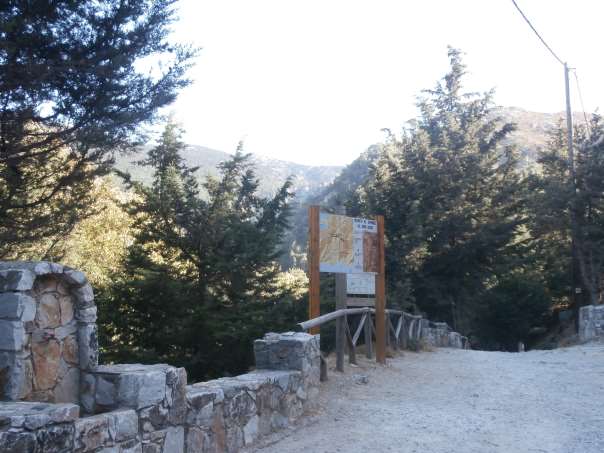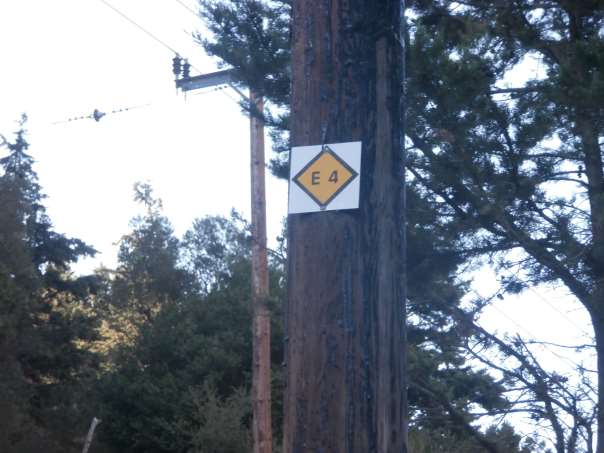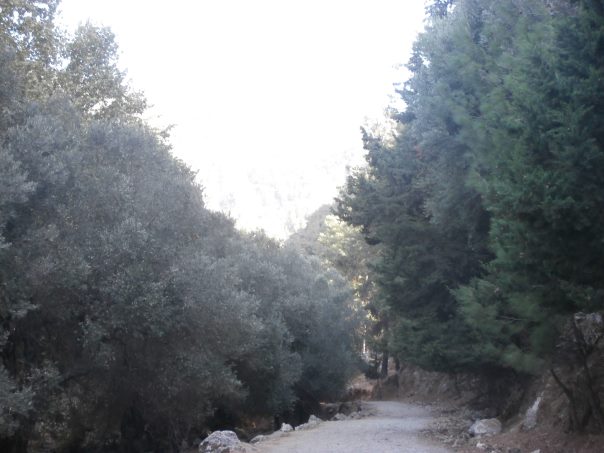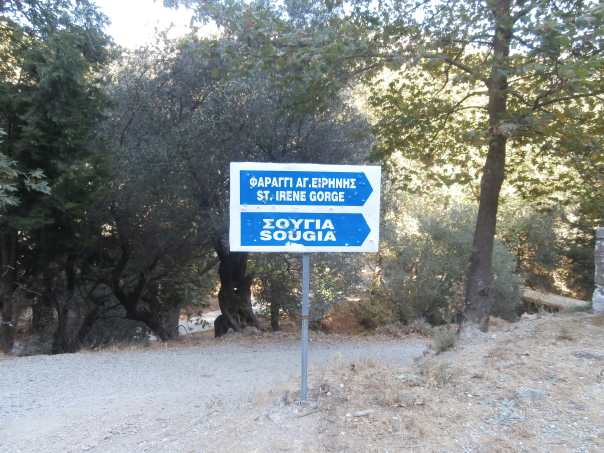The gorge of Agia Irini (also spelt Agia Eirini) is located at the south end of the homonymous village, 46 km south of Chania, along the winding road that leads to the seaside village of Sougia in south west Crete.
Its length is 7 km and its crossing takes three to four hours.
The walk starts from the village of Agia Irini and ends 7km north of Sougia where you can enjoy swimming in the crystal clear waters of the Libyan sea.
It is part of the European E4 path and the NATURA 2000 program as it hosts fabulous and important flora and fauna.
The gorge of Agia Irini is an excellent alternative for hiking to the Samaria gorge as it is much shorter, far less crowded, the descent is only around 550m and thus easier on the knees and most of the walk is shaded by the wooded walls of the gorge.
The path starts at the exit of the village of Agia Irini, just next to a stone house where you must pay a small entrance fee.
The path narrows along the road and crosses the river bed of the Agieriniotis stream several times.
During the first hour of the descent you will reach a large cistern and a shaded rest area with toilets, benches and water.
It is well maintained and shaded most of the time by plane and pine trees.
In the spring the gorge it is also full of wildflowers which dry out by late May.
There are some difficult parts like a bit of scrambling over boulders but on the whole the path is easy and the scenery throughout the gorge is simply stunning.
Facts about the Agia Irini Gorge
The Agia Irini gorge is open all year round.
The length of the Agia Irini gorge is approximately 7km and it will take you about 3 – 4 hours.
From the entrance of the gorge to its exit at the Oasis taverna which is usually open from April to October, the descent is around 550m.
From April to October, a small fee of 2 Euros is collected at the entrance or exit of the gorge, used for maintenance of the path and rubbish collection.
The best period to visit the gorge of Agia Irini is during spring when it is full of wildflowers.
There are toilets and rest areas with water at various points along the gorge, but as not all of the taps are always working, it is advised to carry enough water and all other provisions with you.
The path is generally good, clear and well maintained.
Useful tips
Like everywhere in Crete, the path is stony and so it is best to wear hiking boots.
If it rains avoid crossing the gorge as there is the risk of stones falling.
In case it has rained heavily recently, ask a local whether the gorge is passable, as the river can be a little high.
The path starts south of the village of Agia Irini, about 20km north of Sougia, and ends 7km before Sougia onto the main road which has little shade so if you want to walk to Sougia it is best to make prior arrangements for a taxi transport or at least avoid walking in the mid-day heat in summer as it will eventually take you about 1,5 – 2 hours.
It is advisable to follow the aforementioned main but quiet road to Sougia and not the river bed which is rather stony and tedious.
Wear sunscreen!
How to reach the Agia Irini gorge
The walk through the gorge is 7km but there is another 7kms walk onto the main road to Sougia.
If you choose to go by car or motorbike you will need to get yourself back to your starting point to retrieve your vehicle, unless you choose to walk down the gorge and return by the same route which is doable if you are reasonably fit, as it is 15km, about 5 – 6 hours walk.
If you are driving from the north part of the island, you can leave your vehicle at the upper entrance of the gorge, cross it and then get a transport back to retrieve it.
From Sougia you could drive to the southern entrance, walk up the gorge to the northern exit and catch the bus that goes down to Sougia at around 15.30.
Get off at the junction to Koustogerako and walk about 4km to your vehicle.
If you are coming from Sougia without a car, either get a taxi to the southern entrance, walk up the gorge and get the bus back to Sougia.
You could also take the early bus from Sougia to Chania, reach the northern entrance, cross the gorge and either carry on walking to Sougia or call for a taxi.
If you are coming from Chania without a car, you can take the public bus from Chania to Sougia that gets to the northern entrance of the gorge at around 15.30, walk down the gorge and either carry on walking to Sougia where you can stay overnight or take a taxi back as there is no public transport from Sougia to Chania in the evening.
You could also arrange a roundtrip by taxi at the time you wish, either from Sougia or from the north of the island.









